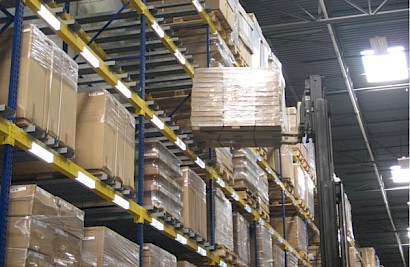IKEA assembles a future without plastic packaging
 Thanks to tiny pieces and convoluted instructions, putting together a bookshelf from IKEA can be a maddening experience. But there’s a payoff: What’s stressful is stylish—and also sustainable.
Thanks to tiny pieces and convoluted instructions, putting together a bookshelf from IKEA can be a maddening experience. But there’s a payoff: What’s stressful is stylish—and also sustainable.
The Swedish retailer has been a champion of the environment for years. In 2018, for instance, it announced plans to use only renewable and recycled materials in its products by 2030 and to complete all last-mile deliveries via electric vehicle by 2025. As of 2020, it no longer uses single-use plastics in its stores or restaurants. And earlier this year it pledged to sell solar panels and renewable energy to customers in all of its markets within the next four years.
But IKEA’s environmental commitment isn’t yet fully assembled. Like a piece of the company’s furniture hours after a customer brings it home, it’s still coming together. The newest piece to the puzzle: IKEA announced it would begin phasing out the use of plastic packaging for its products.
The company will wean itself off of plastic packaging in stages. First, it will eliminate plastic packaging from all new products by 2025. Then, by 2028, it will do the same with all existing products. The only place where plastic will remain beyond 2028 is in select food products, where plastic is needed to ensure food quality and safety.
“Phasing out plastic in consumer packaging is the next big step on our journey to make packaging solutions more sustainable and support the overall commitment to reduce plastic pollution and develop packaging from renewable and recycled materials,” IKEA Packaging & Identification Manager Erik Olsen said in a press release. “The shift will happen progressively over the coming years, and mainly be focusing on paper as it is both recyclable, renewable, and widely recycled across the world.”
IKEA, which every year spends over $1 billion on approximately 920,000 tons of packaging material, already has significantly decreased the amount of plastic used in its packaging. As of today, less than 10% of its packaging is made of plastic. To eliminate plastic completely, the company says, it will have to partner with product development teams and suppliers around the world. It might even have to engineer entirely new solutions.
“Ingenuity is part of the IKEA heritage, and packaging is by no means an exception in that regard,” said IKEA Packaging Development Leader Maja Kjellberg. “Shifting away from plastic in our consumer packaging solutions will doubtlessly be a challenging task in the coming years. With this movement we aim to spur packaging innovation and use our size and reach to have a positive impact on the wider industry beyond our supply chain.”
IKEA wants to lead by example. But not all companies are so proactive. Some U.S. states have therefore decided to give plastic-addicted corporations a push toward sustainable packaging. Two states, in particular: Maine and Oregon, both of which have enacted first-of-their-kind laws that require makers of consumer packaging to pay for the recycling and disposal of their products.
“The Maine and Oregon laws are the latest applications of a concept called extended producer responsibility, or EPR,” authors Jessica Heiges and Kate O’Neill—researchers who study waste and ways to reduce it—explain in an article for The Conversation. “Swedish academic Thomas Lindhqvist framed this idea in 1990 as a strategy to decrease products’ environmental impacts by making manufacturers responsible for the goods’ entire life cycles.”
Maine’s law, which takes effect in 2024, requires manufacturers to pay into a fund based on the amount and the recyclability of packaging associated with their products. These funds will then be used to reimburse municipalities for eligible recycling and waste management costs, to make investments in recycling infrastructure, and to help citizens understand how to recycle.
Oregon’s law, which takes effect in 2025, will require manufacturers to join stewardship organizations and pay fees that will be used to modernize Oregon’s recycling system.
“Producers don’t always literally take back their goods under EPR schemes. Instead, they often make payments to an intermediary organization or agency, which uses the money to help cover the products’ recycling and disposal costs,” write Heiges and O’Neill. “Making producers cover these costs is intended to give them an incentive to redesign their products to be less wasteful.”
Whether EPR laws actually work is a subject of much debate. Going forward, however, a mix of voluntary and regulatory measures might be the best way to incentivize a low-waste economy.
You can return to the main Market News page, or press the Back button on your browser.

